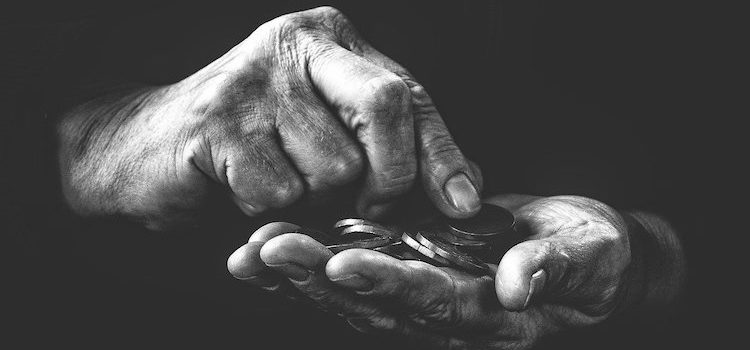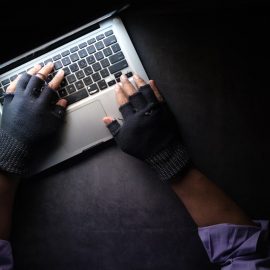

This article is an excerpt from the Shortform book guide to "Maid" by Stephanie Land. Shortform has the world's best summaries and analyses of books you should be reading.
Like this article? Sign up for a free trial here .
What are the main causes of poverty? What are the factors that keep someone in poverty?
In Maid, Stephanie Land puts forth her own life as an example of how systemic problems and circumstances beyond a person’s control can force them into poverty. She shows that many factors contribute to and compound poverty.
Let’s look at the main causes of poverty, using Stephanie Land’s own story of poverty as an example.
Abuse
Land suffering from emotional, psychological, and verbal abuse precipitates her descent into poverty. When Land no longer feels safe, she leaves the home she shares with her abusive boyfriend Jamie. However, she has nowhere else to go, and she ends up in a homeless shelter.
The abuse not only causes Land to lose her home, it almost causes her to lose Mia. Jamie fights Land for custody of Mia, claiming that Land is mentally unstable and an unfit mother.
Even years after Land wins custody, Jamie continues to verbally abuse her and have angry outbursts about having to pay child support or take care of Mia. He also manipulates Mia into believing it’s Land’s fault that Mia doesn’t see him more. The constant conflict with Jamie takes a psychological toll on Land and her daughter. It also means Land has to shoulder a heavier load as a single parent. But what are the main causes of poverty other than abuse?
Weak Labor Market
In addition to Jamie’s abuse and Land’s status as a single mom, the lack of jobs is also a main cause of her poverty. The town where Land lives at the outset of the book, Port Townsend, is a small, seaside community that caters to tourists. Most of the available jobs are low-wage positions in the service industry, and there aren’t many jobs with flexible, part-time work schedules that can accommodate a single parent.
When Land becomes a maid, she notices that three of the women she encounters in her work are single moms. This is because housekeeping is one of the few jobs flexible enough for working, single mothers.
Besides the labor market in her local area, the 2008 recession means many people are unemployed and looking for work throughout the US at the time Maid takes place.
(Shortform note: The financial crisis that officially began in December 2007 and lasted until June 2009 is often referred to as the Great Recession, as it was the most significant economic downturn since the Great Depression. During this time, wages dropped significantly, unemployment rose, and poverty increased. Research shows that expanded government assistance programs mitigated some of the worst effects of the Great Recession, preventing many low-income families from sinking below the poverty line.)
Lack of Education
In addition to an overall lack of opportunity, Land only has a high school education. Her education further limits the jobs available to her. She believes that obtaining a college degree will be her only way out of poverty. To achieve that goal, she takes online classes to earn a two-year degree at a community college.
To get an education while simultaneously working and caring for Mia, Land often stays up until one or two in the morning finishing her homework. She also receives financial aid for low-income students. Her story illustrates how hard it can be for a member of the working poor to get an education.
Lack of Support System
Another factor contributing to Land’s poverty is her lack of a support system. Her fraught relationship with her parents, as well as her parents’ own financial instability, means she has no one to bail her out in emergencies. Not only are her parents unable to provide monetary support, but they also are unequipped to provide psychological support, as they are too wrapped up in their own lives.
Land is so embarrassed about her poverty that she lost touch with most of her friends. She doesn’t want them to know how much government assistance she receives. When Land does confide in a friend, the friend remarks that her tax dollars are paying for all the government assistance Land is receiving.
(Shortform note: Some studies show that a stronger social support network is associated with a lower incidence of material hardship among low-income families. But while low-income families are less likely to enter into hardship if they have a strong support system, this doesn’t mean it’s easier to exit it should they find themselves there.)
How Race and Ethnicity Factor Into Poverty
The main causes of poverty are complex, and, as Maid illustrates, no single factor is determinative. While Land’s own life illustrates many of the factors that contribute to poverty, there are many others she doesn’t directly address—from tax policies to addiction to the criminal justice system. One significant factor that Land’s story is unable to speak to is race.
The poverty rate for Black and Latino Americans is more than double that of white Americans. Since 1960, the median wealth of white households has tripled while the wealth of Black households has hardly increased. In addition, Black poverty is multigenerational—one in five Black Americans are experiencing poverty for the third generation in a row, compared to just one in a hundred white Americans.
Research shows that this inequality is due in large part to the legacy of slavery and America’s long history of discriminatory laws and policies. Following the abolition of slavery, Jim Crow laws that persisted through the 1960s legalized racial segregation in all areas of life. These laws, in combination with discriminatory private practices, prevented African Americans from purchasing homes and forced them to live in specific areas not of their choosing. Examples of these measures include zoning laws, restrictive housing covenants, and discriminatory lending policies.
One policy that had particularly damaging repercussions was redlining, by which the Federal Housing Administration, beginning in the 1930s, refused to insure mortgages in and near African American neighborhoods. During this time, the housing administration also provided subsidies to builders who were mass-producing subdivisions for whites only.

———End of Preview———
Like what you just read? Read the rest of the world's best book summary and analysis of Stephanie Land's "Maid" at Shortform .
Here's what you'll find in our full Maid summary :
- The true story of a single mother who struggled to make ends meet as a housekeeper
- A social commentary on the American “pull yourself up by your bootstraps” mentality
- Background information, research, and statistics on the key themes in the memoir






